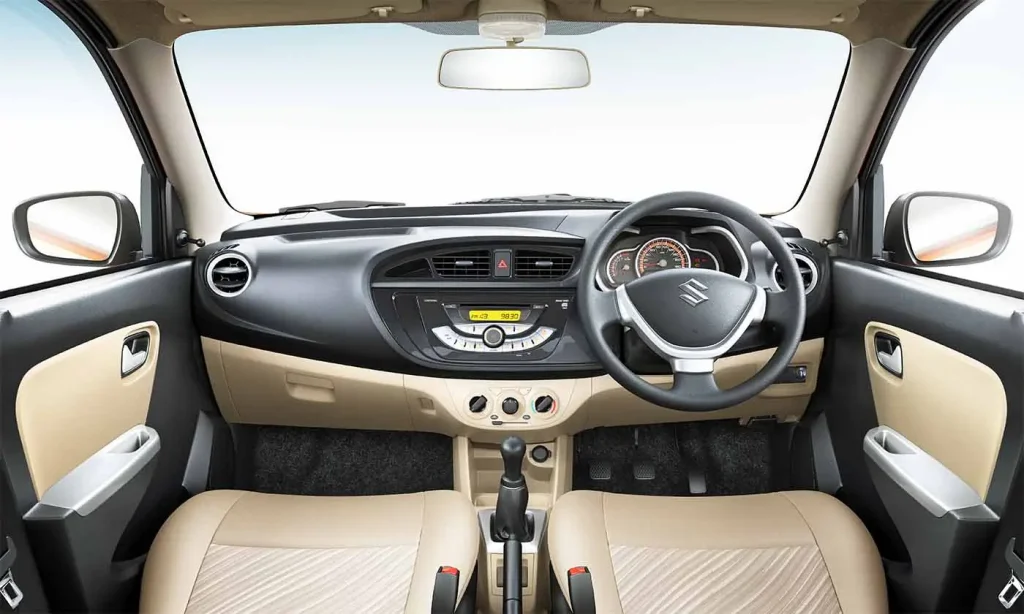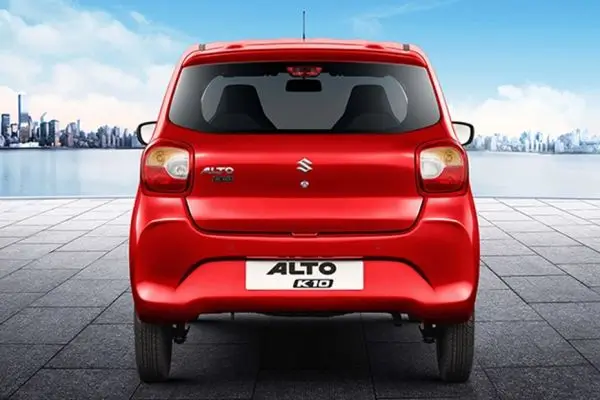India’s largest carmaker, Maruti Suzuki India Limited (MSIL), has announced major festive discounts on its compact hatchback, the Maruti Alto K10, combining tax relief, dealer incentives, and the model’s signature efficiency. The move comes amid rising fuel prices and a renewed focus on affordable mobility.

The Maruti Alto K10’s renewed affordability underscores the resilience of India’s small-car segment. Even as consumers explore premium hatchbacks and compact SUVs, the demand for a reliable, fuel-efficient, and serviceable car remains robust.
While the “35 km/l” figure may overstate typical mileage, the vehicle’s actual efficiency, combined with its nationwide support network, keeps it a formidable contender. In an era of fluctuating fuel prices and economic uncertainty, the Alto K10 continues to embody what many Indian buyers seek—value, simplicity, and trust.
Table of Contents
A Proven Budget Car with a 1.0L Engine
The Maruti Alto K10 remains one of India’s most enduring entry-level cars. Its 1.0-litre K-Series petrol engine delivers 24.39 km/l (petrol) and 33.85 km/kg (CNG) under official Automotive Research Association of India (ARAI) tests.
Maruti first launched the K10 to attract first-time car buyers looking for a small, efficient, and low-maintenance vehicle. The car’s compact design and lightweight Heartect platform ensure strong performance in city traffic and moderate highway use.
“For many Indians, the Alto K10 represents practical independence,” said Rajiv Singh, senior auto analyst at Motown Research. “It combines proven engineering with affordability—critical qualities in today’s cost-conscious market.”

Festive Discounts and GST Cuts Drive Demand
A major Goods and Services Tax (GST) revision announced in late 2025 reduced the levy on small cars (under 4 m, ≤ 1.2 L engine) from roughly 29 percent to 18 percent. The elimination of the additional cess significantly lowered ex-showroom prices across India.
Maruti Suzuki and its dealer network built on that momentum by announcing cash discounts up to ₹35,000, with additional exchange and loyalty bonuses that could total savings of nearly ₹65,000 depending on variant and city.
According to Cardekho and CarWale, the VXi and LXi variants are leading festive-season bookings. Dealers in Delhi, Pune, and Lucknow report that enquiries have doubled since the offer began.
“This year’s combination of tax relief and direct discounts has revived the small-car market,” said Rakesh Bansal, president of the Federation of Automobile Dealers Associations (FADA). “It’s the strongest buyer sentiment we’ve seen since before the pandemic.”
Mileage Claims vs Real-World Performance
Maruti’s marketing emphasises the “35 km/l” claim, a figure that applies mainly to the CNG variant under optimal test conditions. Independent reviewers such as Autocar India and Overdrive found that the petrol manual version averages 20–24 km/l in mixed driving, while the CNG model typically returns 30–33 km/kg.
“Lab test results are valuable benchmarks but not direct reflections of everyday use,” explained Dr Meera Deshpande, automotive engineer at the Indian Institute of Technology (IIT) Bombay. “Still, the Alto K10’s efficiency ranks among the highest in its class.”
Real-world differences stem from traffic conditions, fuel quality, and driving habits. Yet for budget-conscious families and small business owners, the K10’s low running cost remains its strongest appeal.
Consumer Voices from the Showroom Floor
In Mumbai’s Andheri West, Ramesh Pawar, a 32-year-old delivery entrepreneur, recently booked the CNG variant.
“I needed a reliable car for daily operations. The CNG option means I’ll save almost ₹4,000 a month on fuel,” he said.
Meanwhile, college lecturer Sunita Iyer in Chennai cited the vehicle’s ease of maintenance.
“Maruti’s service network and affordable spares make ownership stress-free. That matters more than touchscreen features,” she said.
Market Competition and Industry Outlook
The small-car segment has seen renewed rivalry from Renault Kwid, Tata Punch CNG, and Hyundai Santro. While competitors offer more advanced infotainment or design flair, Maruti Suzuki’s extensive service network—spanning more than 3,700 outlets—gives it an enduring edge.
According to data from the Society of Indian Automobile Manufacturers (SIAM), Maruti retains roughly 45 percent of India’s compact car market. Analysts believe its discount-led strategy may reinforce this lead through FY 2025–26.
“Maruti’s strength lies not only in price but in trust,” said Vikram Chatterjee, an automotive consultant based in New Delhi. “Customers know spare parts will be available even in smaller towns.”

Macroeconomic Context: Inflation and Affordability
India’s headline inflation eased to 4.9 percent in October 2025, but household budgets remain tight due to higher food and fuel costs, according to the Reserve Bank of India (RBI). Rising fuel prices have driven consumer interest in efficient or alternative-fuel vehicles.
The Alto K10’s low purchase price—starting around ₹3.99 lakh (ex-showroom)—makes it a critical entry point for India’s vast lower-middle-income population. Auto analysts say that small-car affordability acts as a barometer for broader consumer confidence.
“When small-car sales pick up, it signals household optimism,” noted Dr Anjali Kapoor, automotive policy researcher at the Centre for Policy Research (CPR).
Related Links
CNG and the Road to Cleaner Mobility
The government’s promotion of compressed natural gas (CNG) is part of a wider push toward reducing carbon emissions and oil imports. CNG cars produce roughly 20–25 percent fewer greenhouse gases than petrol equivalents, according to India’s Ministry of Petroleum and Natural Gas.
Maruti Suzuki currently sells over ten CNG-powered models and plans to expand its CNG production footprint to meet rising demand. The company is also piloting biogas CNG stations in collaboration with state utilities to improve infrastructure.
“CNG is a bridge technology between conventional petrol engines and full electrification,” said Prashant Menon, senior fellow at the Energy and Resources Institute (TERI). “For cities still developing EV charging networks, CNG offers an immediate, scalable alternative.”
Future Plans and Electrification Prospects
Maruti Suzuki has confirmed that it will introduce hybrid and battery-electric variants across select models within the next three years. While no electric Alto K10 has been announced, industry observers anticipate a micro-EV in the entry-level range by 2027, supported by Suzuki Motor Corporation’s battery partnership with Toshiba and Denso in Gujarat.
Such developments align with India’s national target of 30 percent EV sales by 2030, set under the Faster Adoption and Manufacturing of Hybrid and Electric Vehicles (FAME II) policy.

















